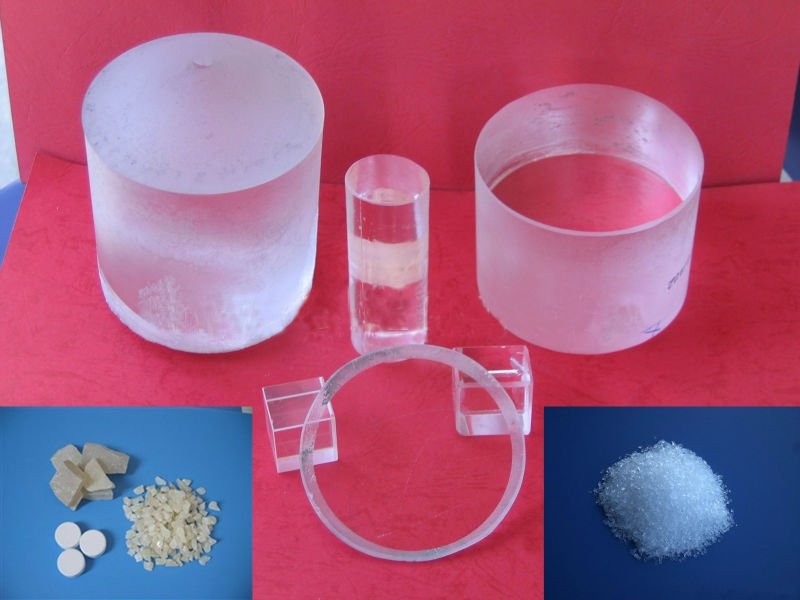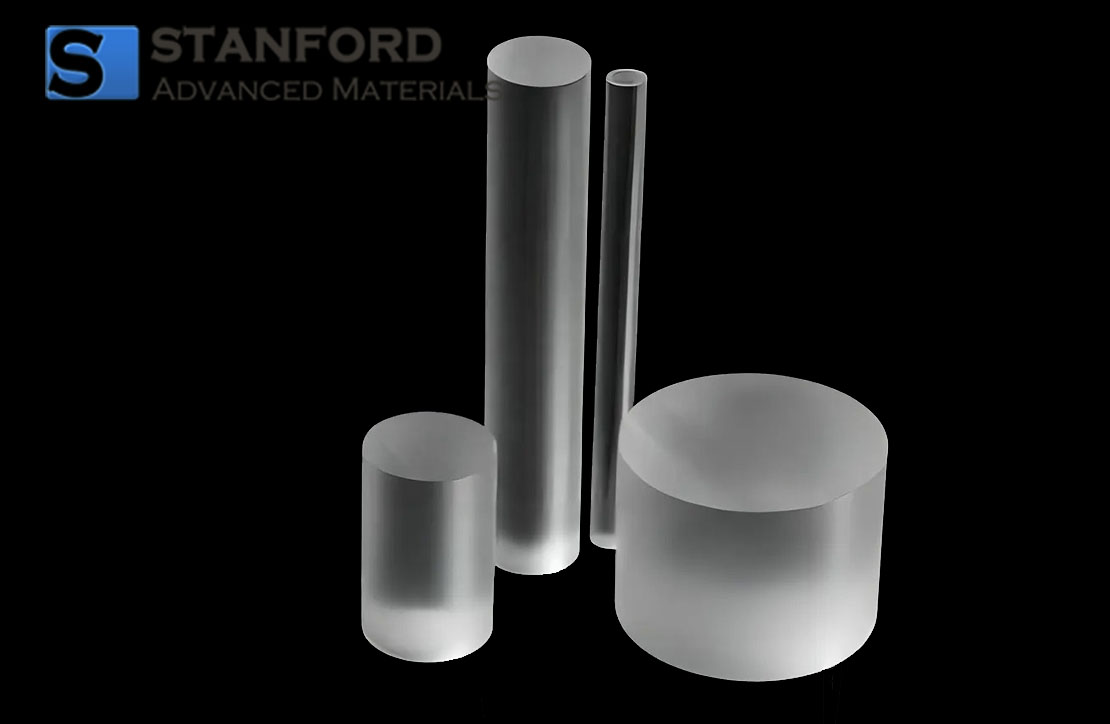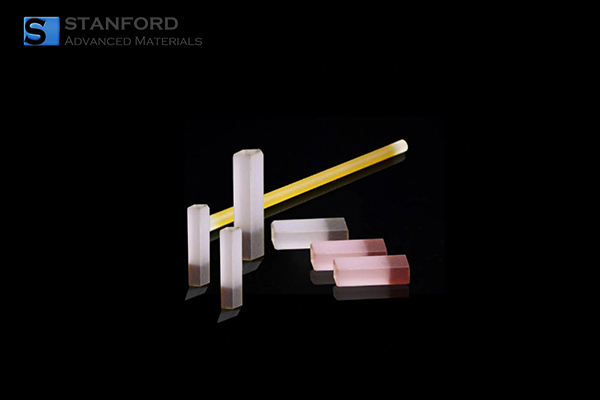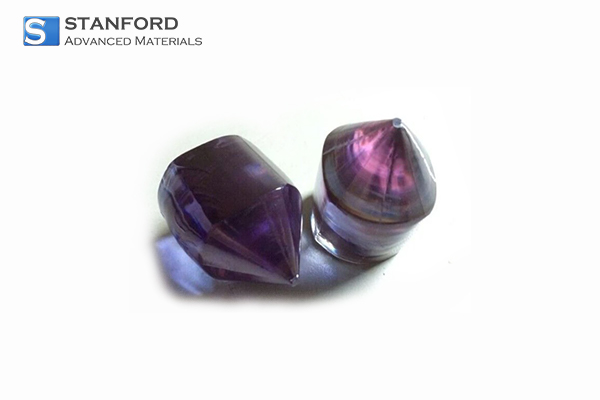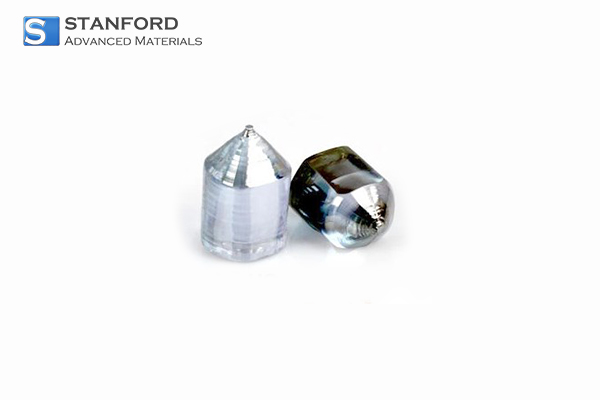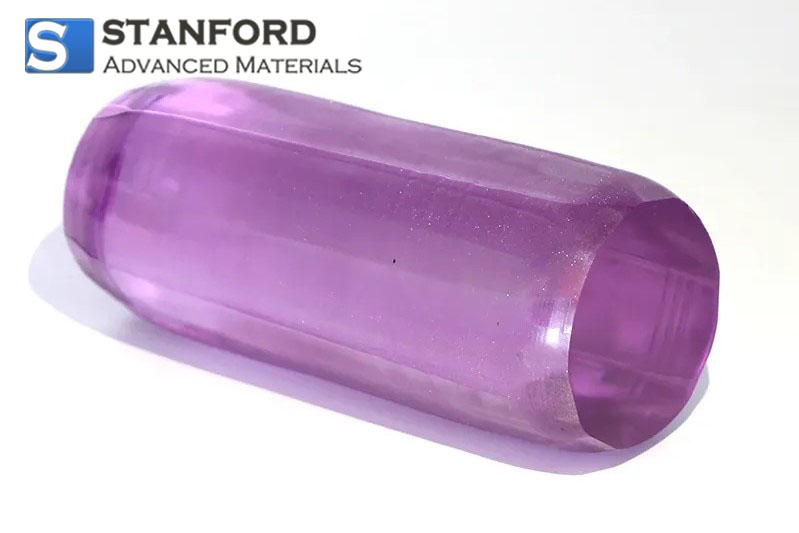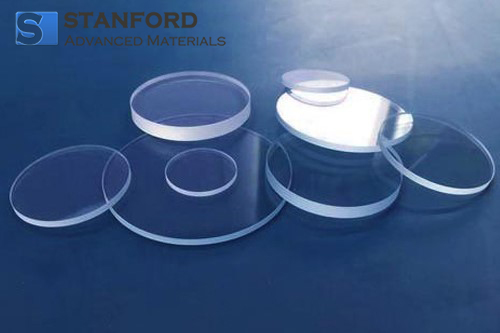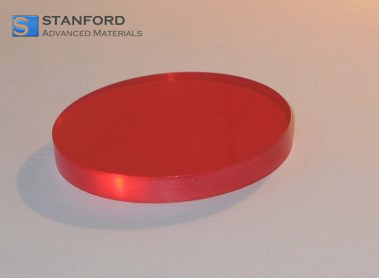SECTION 1. IDENTIFICATION
Product Name: Thallium Bromide
CAS #: 7789-40-4
Relevant identified uses of the substance: Scientific research and development
Supplier details:
Stanford Advanced Materials
E-mail: sales@samaterials.com
Tel: (949) 407-8904
Address: 23661 Birtcher Dr., Lake Forest, CA 92630 U.S.A.
SECTION 2. HAZARDS IDENTIFICATION
2.1. CLASSIFICATION OF THE SUBSTANCE OR MIXTURE
Class 6.1 Poison. Very toxic by ingestion with cumulative effects. Harmful in contact with skin. Toxic to
aquatic organisms, may cause long term adverse effects in the aquatic environment. Particular care
must be exercised when machining and creating dust or particles. Dangerous for the environment.
2.2. LABEL ELEMENTS
Signal Word: Danger
H300 Fatal if swallowed
H330 Fatal if inhaled
H373 May cause damage to organs through prolonged or repeated exposure.
Signal Word: Warning
H411 Toxic to aquatic life with long lasting effects
Precautionary Statements:
P260 Do not breathe dust/fume/gas/mist/vapors/spray.
P264 Wash thoroughly after handling.
P270 Do not eat, drink or smoke when handling this product
P273 Avoid release to the environment.P301+P310 IF SWALLOWED: Immediately call a poison centre or doctor. Rinse mouth.
P304+P312 IF INHALED: Call a poison centre or doctor/physician if you feel unwell.
2.3. OTHER HAZARDS
None
SECTION 3. COMPOSITION/INFORMATION ON INGREDIENTS
3.1. SUBSTANCES
Component Name CAS number % EC number (EINECS) EU index UN number
Thallium Bromide 7789-40-4 100% 232-163-0 081-002-00-9 1707
SECTION 4. FIRST AID MEASURES
4.1. DESCRIPTION OF FIRST AID MEASURES
GENERAL: Consult a doctor for specific advice.
EYES: Irrigate thoroughly with water for at least 15 minutes. Obtain medical attention.
SKIN: Wash thoroughly with soap and water. Dry area with clean towel. Remove contaminated
clothing and wash clothing before re-use.
INHALATION: Remove to fresh air. Perform artificial respiration if breathing has stopped. When
breathing is difficult, properly trained personnel may administer oxygen. Keep affected person warm
and at rest. Obtain medical attention.
INGESTION: Do not induce vomiting. Wash out mouth thoroughly with water and give 2 cups of water
to drink. Do not give carbonated drinks. Never give anything by mouth to an unconscious person.
Obtain medical attention immediately.
4.2. MOST IMPORTANT SYMPTOMS AND EFFECTS, BOTH ACUTE AND DELAYED
Refer to Section 2.2 and to section 11.
4.3. INDICATION OF ANY IMMEDIATE MEDICAL ATTENTION AND SPECIAL TREATMENT
NEEDED
No Data.
SECTION 5. FIREFIGHTING MEASURES
5.1. EXTINGUISHING MEDIA
This product does not burn.
5.2. SPECIAL HAZARDS ARISING FROM THE SUBSTANCE OR MIXTURE
Material may evolve toxic fumes in a fire.
5.3. ADVICE FOR FIREFIGHTERS
Use breathing apparatus if necessary.
SECTION 6. ACCIDENTAL RELEASE MEASURES
6.1. PERSONAL PRECAUTIONS, PROTECTIVE EQUIPMENT AND EMERGENCY PROCEDURES
Wear suitable protective clothing & equipment as listed under Section 8. Avoid making dust.
6.2. ENVIRONMENTAL PRECAUTIONS
Prevent further leakage or spillage. Do not let product enter drains. Do not discharge to the
environment.
6.3. METHODS AND MATERIALS FOR CONTAINMENT AND CLEANING UP
Take up and containerize for proper disposal. Containerize any cleaning materials used for properdisposal.
6.4. REFERENCE TO OTHER SECTIONS
Dispose as in Section 13.
SECTION 7. HANDLING AND STORAGE
7.1. PRECAUTIONS FOR SAFE HANDLING:
Keep away from heat. Avoid contact with skin and eyes. Protect against physical damage. Avoid
generating dust.
7.2. CONDITIONS FOR SAFE STORAGE, INCLUDING ANY INCOMPATIBILITIES
Keep away from foodstuffs. Keep away from acids and strong bases.
7.3. SPECIFIC END USES
Optical Material for Manufacture of Optical Components.
SECTION 8. EXPOSURE CONTROLS/PERSONAL PROTECTION
8.1. CONTROL PARAMETERS
OCCUPATIONAL EXPOSURE LIMITS (OEL) = 0.1 mg/m3 in 8 hour Time Weighted Average (TWA)
8.2. EXPOSURE CONTROLS
Protective gloves made of PVA are required. Use of a laboratory coat is suggested. Safety goggles or
safety glasses with side shields are required if there is any possibility of chipping or dust creation.
Respirators must be worn when the threshold limit is exceeded. Provide adequate general mechanical
ventilation, and local exhaust ventilation. Wash hands immediately after handling the product.
SECTION 9. PHYSICAL AND CHEMICAL PROPERTIES
9.1. INFORMATION ON BASIC PHYSICAL AND CHEMICAL PROPERTIES
APPEARANCE : Grey/clear geometric shapes, no odour. FLASH POINT: Not Applicable
BOILING POINT (760mm Hg) Not Applicable FLAMMABILITY: Not Applicable
MELTING POINT: 460?C EXPLOSIVE PROPERTIES: Not Applicable
SPECIFIC GRAVITY: 7.453 g/mL Vapor PRESSURE: Negligible at 25?C
SOLUBILITY IN WATER: 50mg/100ml H2O at 20?C pH IN AQUEOUS SOLUTION: No data available
SECTION 10. STABILITY AND REACTIVITY
10.1. REACTIVITY
Reacts with strong oxidising materials
10.2. CHEMICAL STABILITY
Stable under normal conditions of storage and use
10.3. POSSIBILITY OF HAZARDOUS REACTIONS
None known
10.4. CONDITIONS TO AVOID
Can react with oxidising agents. Avoid strong acids
10.5. INCOMPATIBLE MATERIALS
Strong Mineral Acids. Strong oxidising materials
10.6. HAZARDOUS DECOMPOSITION PRODUCTS
Thallium, Hydrogen Bromide.
SECTION 11. TOXICOLOGICAL INFORMATION
11.1. INFORMATION ON TOXICOLOGICAL EFFECTS
Extremely toxic by ingestion, with a cumulative effect. Affects nervous system, skin and cardiovascular
system. Symptoms include vomiting, muscle pains and swelling, mental confusion and insomnia, hair
loss. Also harmful in contact with skin. Particular care must be exercised when machining and creating
dust or particles. Inhalation of dust may irritate respiratory system.
TOXIC DOSE - LD50 >24 mg/kg (oral/mouse) CARCINOGENICITY: No evidence of carcinogenic
properties.
MUTAGENICITY/TERATOGENICITY: Evidence of reproductive effects
SECTION 12. ECOLOGICAL INFORMATION
12.1. TOXICITY
Danger to drinking water. Poisonous to Fish
12.2. PERSISTENCE AND DEGRADABILITY
No Data
12.3. BIOACCUMULATIVE POTENTIAL
No Data
12.4. MOBILITY IN SOIL
No Data
12.5. RESULTS OF PBT AND vPvB ASSESSMENT
Not required or conducted
12.6. OTHER ADVERSE AFFECTS
Do not allow product to reach groundwater, water courses, or sewage systems. Only release to
environment with proper government permit.
SECTION 13. DISPOSAL CONSIDERATIONS
13.1. WASTE TREATMENT METHODS
Chemical residues are generally classified as special waste, and are covered by regulations which
vary according to location. Contact your local waste disposal authority for advice, or pass to a
chemical disposal company.
SECTION 14. TRANSPORT INFORMATION
14.1. UN NUMBER: 1707
14.2. UN PROPER SHIPPING NAME:
Thallium Compounds, N.O.S. (Thallium Bromide).
14.3. TRANSPORT HAZARD CLASS: 6.1
14.4. PACKING GROUP: II
14.5. ENVIRONMENTAL HAZARDS: Marine Pollutant
14.6. SPECIAL PRECAUTIONS FOR USER: None
14.7. TRANSPORT IN BULK MARPOL / IBC: No Data
SECTION 15. REGULATORY INFORMATION
15.1. SAFETY, HEALTH AND ENVIRONMENTAL REGULATIONS / LEGISLATION SPECIFIC FOR
THE SUBSTANCE OR MIXTURE
TSCA: Listed in the TSCA inventory
SARA: Listed. This product is subject to SARA section 313 reporting requirement – thallium
compounds.
WHMIS: This is a controlled product under the Canadian Workplace Hazardous Materials Information
System
SECTION 16. OTHER INFORMATION
Safety Data Sheet according to Regulation (EC) No. 1907/2006 (REACH). The above information is
believed to be correct but does not purport to be all inclusive and shall be used only as a guide. The
information in this document is based on the present state of our knowledge and is applicable to the
product with regard to appropriate safety precautions. It does not represent any guarantee of the
properties of the product.
